‘One Piece’ Co-Showrunner Matt Owens Gives Major Season 2 Update, Talks Jamie Lee Curtis As Dr. Kureha, Buggy’s Viral Fame & Why Series Is So Personal To Him
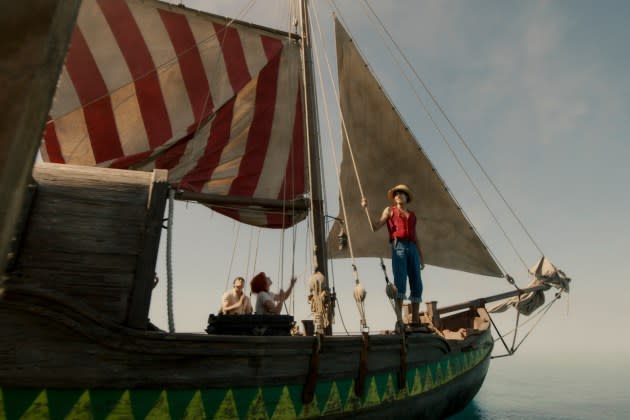
Five weeks into its run, Netflix’s One Piece remains firmly in the streamer’s weekly Top 10, amassing 57.8M views to date. For four of them, which included One Piece‘s quick Season 2 renewal, series writer/executive producer/co-showrunner Matt Owens was on strike with the rest of the WGA.
In his first interview tied to the One Piece launch, Owens speaks about missing the promotional campaign and premiere event for the show as well as not being able to comment on the critical and ratings success of the manga adaptation and its quick renewal.
More from Deadline
He reveals that writing for Season 2 has resumed following the end of the WGA strike, with the writers room reopening this week, and gives a progress report on the writing process. Owens also lays out the main theme for Season 2, provides details about how the tag scene at the end of the Season 1 finale sets up the new season and shares additional Season 2 clues for fans of Eiichiro Oda’s best-selling manga that One Piece is based on.
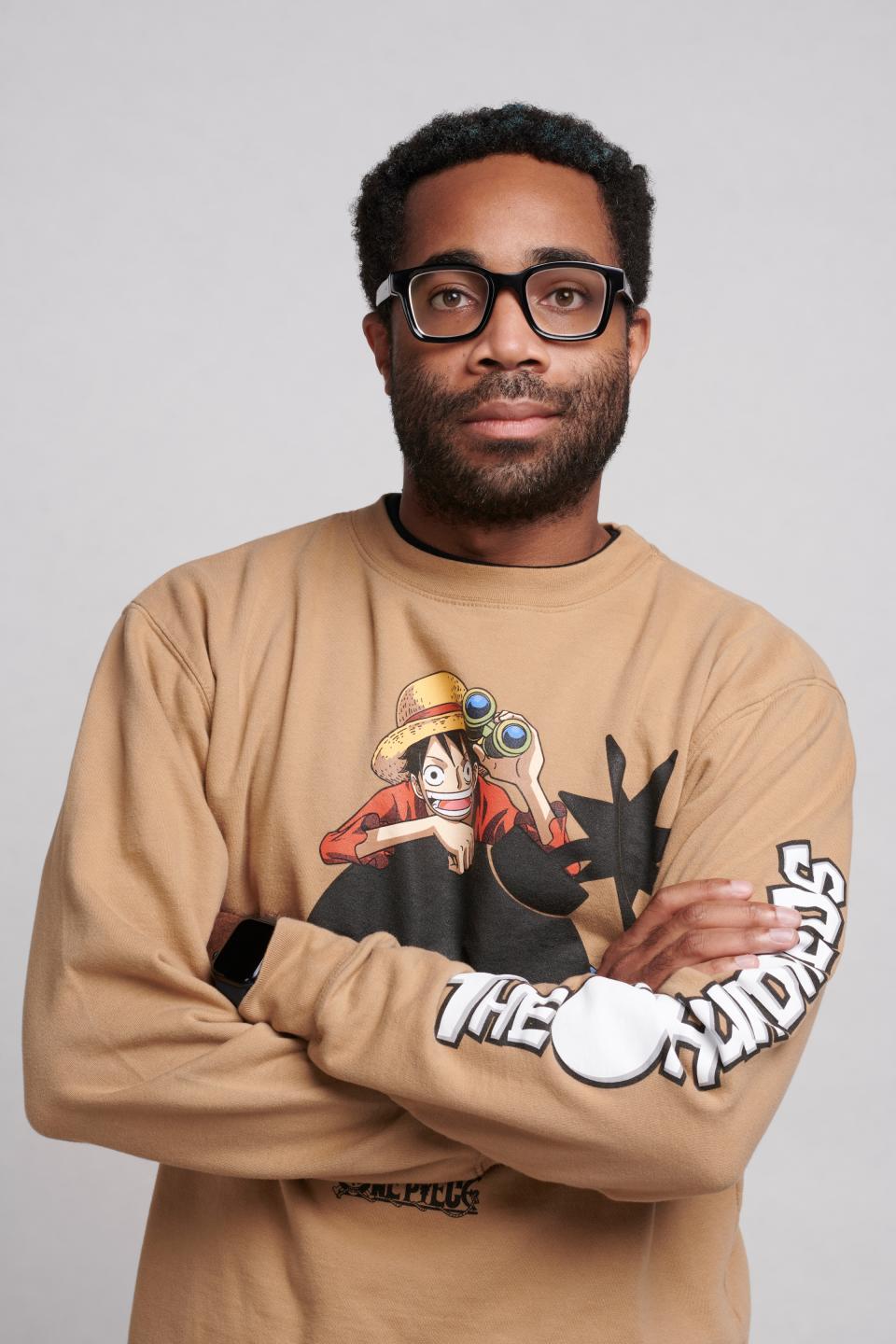
Additionally, Owens discusses the effort to bring in Jamie Lee Curtis as Doctor Kureha next season and writing the character for her, addresses Buggy’s surprise TikTok sex symbol status and why the clown and the rest of the One Piece villains keep hanging around and don’t die. He reveals the Season 1 scene that makes him tear up and how he stays in touch with the Straw Hats, the breakout young stars of the live-action adventure series about an aspiring “King of the Pirates,” Luffy (Iñaki Godoy), and his crew.
Owens also talks collaborating with Oda and how long the South Africa-based series could go, and he shares a touching personal story about the Once Piece anime which helped him land the sought-after gig of adapting the beloved IP, despite a TV resume that included a handful of lower-level writing jobs on Marvel series.
DEADLINE: When did you discover One Piece and how did you get involved in its live-action adaptation?
OWENS: I’ve been an anime fan my entire life. One Piece specifically i tried to dive into when I was younger and getting into a lot of other series like Naruto, Sailor Moon and Dragon Ball Z. But One Piece was a little difficult because the company that was dubbing it in English notoriously did a horrible job. It turned a lot of people off; it stripped out some of the heart, it stripped out some of the danger of the world, so I dropped it.
As I got older and continued in the genre, there was always a very vocal fan base for One Piece, guys you need to read it, you need to give it a try. I just never did. And then there was a period of time in my early 20s, I had just recently moved to Los Angeles. I was working on trying to get into the film and television business, and I was really depressed at this time. I just wanted to go to work and go home and not really deal with people or be social or anything like that. So I thought, well, now’s a great time to try and get into One Piece because there are hundreds and hundreds of episodes and I’m not doing anything else.
I found it at a really dark and low point in my life but I also attribute it with helping me get out of it because One Piece is such a wonderful, positive, inspirational series. That’s what really galvanized me to, once I heard that someone was trying to make a live-action, to try and get involved because I owe this series a lot. I love this series a lot, and I wanted to be the one to shepherd and protect it and to hopefully make a version that could inspire people the same way that the original inspired me.
DEADLINE: How did you feel then not being able to attend the One Piece premiere and watching the series’ success from the picket lines?
OWENS: It was a little bit tough not being able to experience it firsthand or really even talk about it. This was five years of my life, getting this show made. I’m very proud of it, and I still loved to be able to watch it, but not being able to share that, especially with my cast, it was tough. I’m glad that it’s out there and I’m glad for the reception that it’s gotten but there was a little bit of a hole in my heart not being able to engage and participate but I’m thankful now for the opportunity like with people such as yourself.
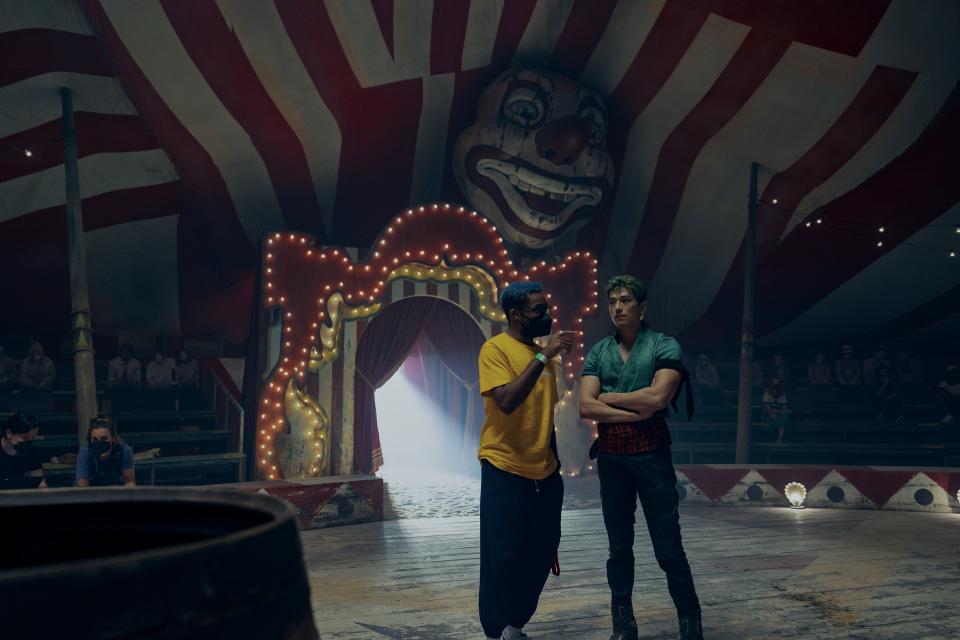
DEADLINE: Had all the cuts been finalized by the time the WGA strike started May 2 or was there unfinished business when you left? Were there surprises when you watched the show on Netflix?
OWENS: We were very close. I had just gotten to Tokyo to meet with Oda again in April and have conversations with him about where the cuts were, some things that he wanted to see. So we were back in post when the strike hit. We were picture-locked on most things, there was still a lot of visual effects, final music; it was mostly finals. I’d seen stages of the majority of it, which was another heartbreaking thing about it — I didn’t get to finish the show.
But luckily, my post-production team, the effects team, they know me, and they know the show. So for having to step away, I still felt like the show was in the best possible hands. And Oda was still involved, even though we were not communicating about the show.
It was exciting because I had never seen the final final cuts of this show until the rest of the world did, so I did feel like there were some little surprises for me to discover, Oh, that’s how that turned out, that’s f*cking great, things like that.
DEADLINE: Anything you hadn’t seen that particularly impressed you?
OWENS: Mihawk’s introductory scene, the battle on the beach. That was something that we had talked about a lot. It was a scene that I was really excited about, it was a scene that Oda was very excited about, and I think it turned out beautifully. It’s one of the most exciting sequences of the show’s first season.
DEADLINE: The scene at the end of the Season 1 finale with the shadowy figure was shot after the fact, in the spring. Were you involved in the decision to add it?
OWENS: Yes, pitching that scene. There were some things about the ending that I wasn’t very convinced of, that I wasn’t entirely happy with. Actually I believe it was, if not the day, it was maybe two days before the strike, I pitched the idea to the team to include that tag. And I got word that they were going to do it.
I wasn’t there for the shooting of it, I didn’t actually see it until it was on the platform like everyone else. So that was also fun, to see how they did it, and it is just as exciting of a tag and a tease as was hoping it would be.
DEADLINE: What can you tease about how that sets up the second season?
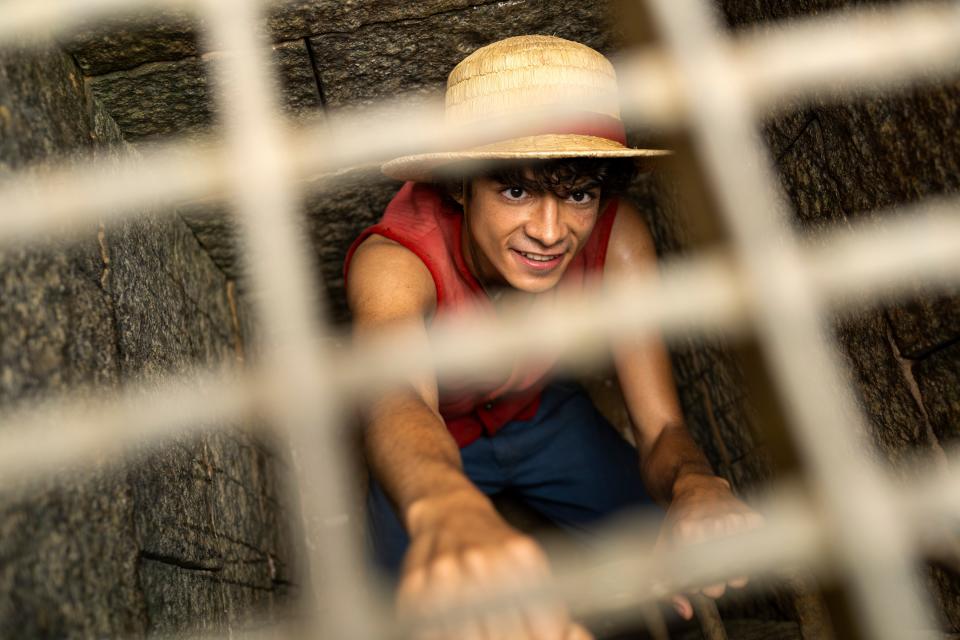
OWENS: Season 1 ends with Luffy gaining notoriety. And while it’s something that he wants — he wants to be taken seriously as a pirate in this world — as Nami and Zoro say, this is putting a target on your back. A lot of people are going to know you and know your face. And so that tag at the end is really reinforcing that idea that there are people who now know of Luffy’s existence, and they’re going to try to put a stop to him.
That character in the end is a very important character moving into our next season, and as Garp says to [Luffy] as well, you’re on your own. While Garp may have been the Marine who was testing Luffy, not every Marine is going to give him any leeway because of who his grandfather might be. And so we’re going to see this very powerful, very driven marine as a major antagonist moving forward in the story.
DEADLINE: Tell us more about that Marine, Captain Smoker?
OWNENS: He is very popular character who reappears throughout the manga at various times. He’s someone that I thought people would be excited to tease him, knowing what is coming with him. And it seems to have gotten over well.
I love that kind of stuff; I love a tag that can give you a nice tease for people who might be new to adaptation, and for fans, for people who know, it’s like a rabid excitement. They know who that is, they know what that means, they are excited to see him and to start to question how we’re going to play this character and how we’re going to unfold his role moving forward.
DEADLINE: You were on strike too at the time, but had the process of casting Smoker started before the SAG-AFTRA strike?
OWENS: No one’s been cast yet not only because of both strikes going on but we were still early in the process; we weren’t beyond talking about potential, digging into the characters, talking about who they are, maybe coming up with a couple of comps. But no, we had not gotten into any actual casting yet for Season 2.
DEADLINE: What about another character the series will be introducing in Season 2, Doctor Kureha? Talk about the outreach to Jamie Lee Curtis and your recent IG exchange with her after she confirmed her interest. Obviously the SAG-AFTRA strike is still ongoing but can we assume that she will do it?
OWENS: We have opportunities to stunt cast some roles, some rules that are very important, and it came out that Jamie Lee Curtis is a One Piece fan. As soon as she said that, we were like, okay, we have to try and get her on the show. What can we do? And Doctor Kureha, very luckily, is a character who is coming up in our story, and is someone who is perfect for Jamie Lee Curtis.

So we tried to start manifesting this dream of ours. After she won her Oscar, the writers room sent her a figure of Doctor Kureha with a nice note that said, “Congratulations on your statue, here’s another one to put next to it. Hope to speak to you soon.”
When she reposted that, it got a lot of fan interest, and I commented on it. We’re trying to manifest it. Yes, as of right now, SAG is still striking so there have not been real conversations. But as soon as there can be, I’m ready. I will take her out to dinner, we’ll talk about it. We’ll do all of it because at this point we’re writing for her — we really, really want her to come and play with us in Season 2.
DEADLINE: Where exactly are you in the writing process on Season 2? Do you have any completed scripts or just outlines?
OWENS: We did start our Season 2 writers room for a little bit before the strike. We didn’t get much further than starting to plan out what the season is going to be and got a couple of outlines done. But that’s as far as we got. So there are not actually any scripts for the season that are done. It’s still going to take some time.
And of course, now that the show has come out, there are things to look at and lessons to learn as we move forward. We’ve got some outlines, and we have a really solid plan that we had communication with Oda about. Part of my trip in April was to talk to him about some of the early ideas that we had, talking to him about things that I want to include to just make sure that our ideas are in line with what he thinks.
One of the really fun aspects of this show to me is, the manga has been going on for so long, and sometimes Oda revisits previous places in time or reveals information about a certain character who was at an event or who has knowledge of something. And we get to take all of that and play with it in the present-day story for us.
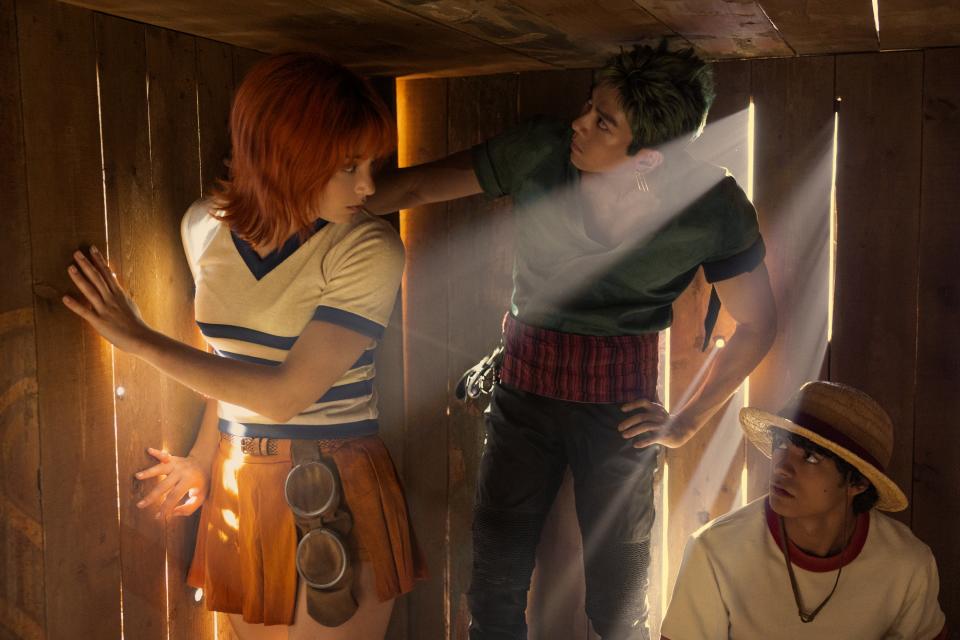
Some fans might understand what are two things that I might be alluding to with a statement like that but that was also a part of my conversation with Oda in getting ready for Season 2, it’s like, ‘Hey, are you cool if we put this person here because it’s something that we know happens years later’? And he was like, yeah. He enjoys that too, he enjoys seeing the depth of knowledge and love for his source material and allowing us to tell the story in a way that looks slightly different on is still on the whole in line with his vision.
That communication has been open and we’ve gotten some insight from him, we’ve gotten some things approved, and we had started our process. We are now back up and running as of this week, and we’re going to try and take the appropriate time that we need to get it right, but we’re going to try and get stuff up and running again as soon as possible.
DEADLINE: You mean the writers room is up and running this week, right?
OWENS: The writers room is up and running, yes, getting scripts done so that we can get into design work, scheduling and pre-production, all of that kind of stuff.
DEADLINE: We can’t talk production scheduling yet with the actors strike ongoing but there’s also the weather you’re working around so filming should ideally start in early 2024 if you want to avoid the brunt of the South African winter (June-August)
OWENS: Those are conversations that are still happening. You’re right, weather is something we have to deal with. South African winter is very windy, very wet, so we really have to plan. We spend a lot of time outside, we spend a lot of time in sunny blue skies, so a lot of our shooting schedule is built around the weather; taking a look at how much time are we spending inside in particular episodes, where can we put that in the schedule so that we’re not fighting the weather?
DEADLINE: Is there an overarching theme for Season 2 that you can share?
OWENS: Without saying too much, and speaking to any new characters that we might meet, I would say a major theme that we’re working with in Season 2 is the challenge of leadership. From Luffy’s perspective, he’s got his crew now, and they are setting out to the Grand Line. They’re doing the thing, and there are a lot of challenges that come with that responsibility. And that theme ties into some other stories and characters that I won’t give away just yet. But the challenge and leadership is a big theme for us in Season 2.
DEADLINE: You alluded to potentially making adjustments based on fans’ reactions to Season 1? Will you make Buggy even more prominent because he has been such a breakout? Did you expect that of all characters he would be the one to become a TikTok phenomenon?
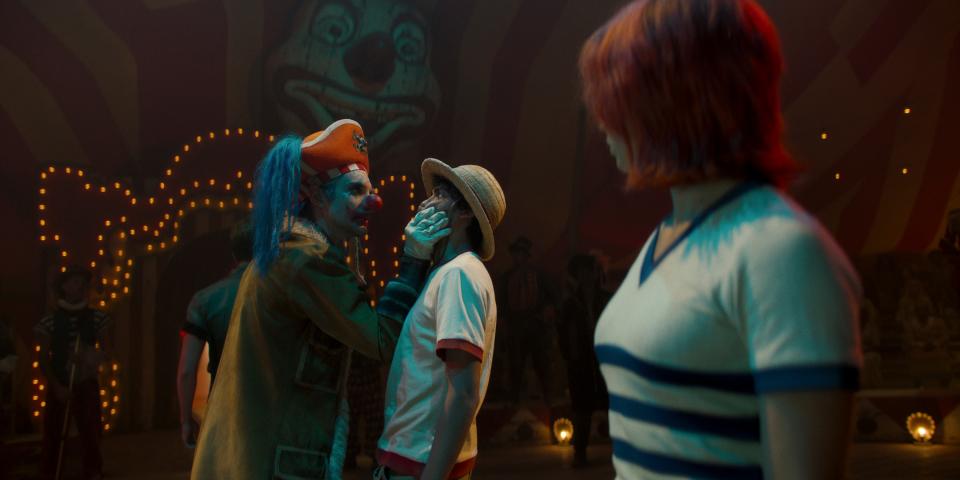
OWENS: No, not to the extent that he is. I knew Jeff Ward, we had worked together on Agents of S.H.I.E.L.D. previously; we’ve always had a great working relationship that blossomed into a very close friendship. I was still on S.H.I.E.L.D. when I first started developing One Piece. We went out to dinner one night and I said, Hey, I’m doing this show. Take a look at it because there’s a character that I really want you for.
So Jeff and I have been talking about Buggy the Clown for years. Jeff is such a phenomenal actor, he brings such depth, such playfulness, such thought to everything that he does, and he killed it. It was so fun seeing him embody that character. So I knew that he would hit, I knew that people would really like him. To the extent that they have, to the extent that they have been horny for him, that’s new for me, but I’m glad to see him getting the attention that he deserves as an artist.
DEADLINE: Buggy is still around despite all the terrible things he did. Why don’t villains die on your show?
OWENS: Dreams are very important in the One Piece world, and Oda has said before that what’s worse than death is a dream being taken away. So when you see a lot of the villains that we meet, they have these machinations, they have these desires — often nefarious — and the Straw Hats take those away from them.
For Oda as an artist, the way that he has described it, that is a fate worse than death. So that’s something that he likes to focus on in villain confrontations instead, and what it also allows him to do though is, when there is death in One Piece, it’s even more impactful because you’re not dealing with death every single story arc necessarily. That is Oda’s perspective as an artist and creator, and it’s something that we have taken on as well.
DEADLINE: What did you learn from Season 1 that you would like to use for Season 2?
OWENS: Honestly, one of the biggest lessons that I think we’re taking into Season 2 is to trust ourselves. We managed to make something that really resonated with people, with newcomers and fans alike. And this was a difficult show in terms of tone, in terms of the world and how weird it can be but it’s also incredibly emotional.
We did not know how people were going to respond, and I’m moved by how positively on the whole it has been received. And so I believe one thing for us to take is to trust ourselves. Now we can say, Okay, we were walking a tightrope, and we got to the other side, people are down for what we put out into the world, people are okay with this weird, wacky world. And so let’s keep doing it, let’s give them more of what we want to make because what we want to make is what they want to see.
It’s also nice that, for the most part, existing fans understand and like the changes that were made. I think they appreciate that it comes from conversations between Oda and I, that we’re not taking this from a stance of, we’re changing things just to change things. Nowhere in the development of this show was it like, What’s the concept? It’s a rubber boy in a straw hat who’s a pirate? Great, I’m going to tell my own story with that.
DEADLINE: EPs Marty Adelstein and Becky Clements mentioned that you may have a six-year plan and the source material is so vast that you can easily make as many as 12 seasons. Do you have a goal how many seasons you’d like this to go?
OWENS: I do. I want to go as long as we can. There’s a lot of source material. And while I do — just because I’m so obsessive not just with One Piece but planning in general — I do have ideas of what future seasons can be, what will be included in them, how we can, on a macro level, structure some things just because of the wealth of material that we have. I will make this show until Netflix says no more.
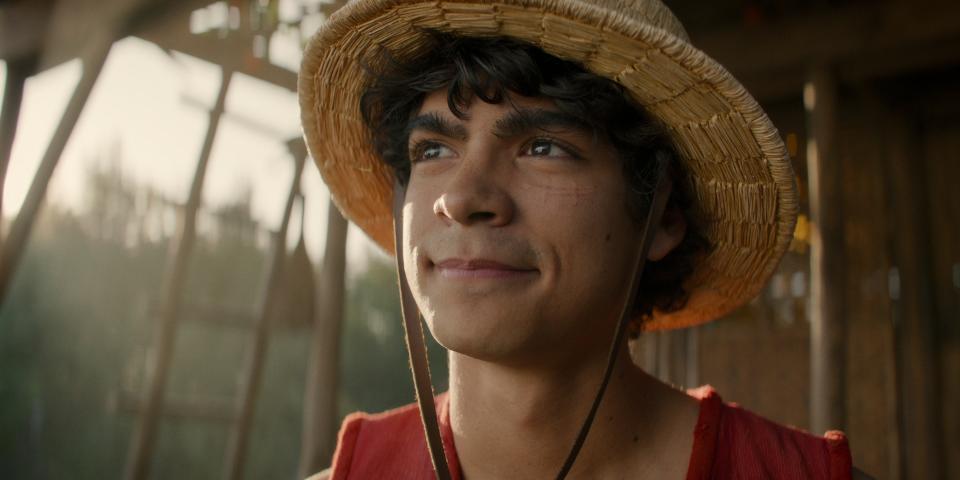
DEADLINE: Do you stay in touch with the One Piece stars who have not been able to enjoy the success of the show and their own breakthrough because of the SAG-AFTRA strike? How would you evaluate their performances?
OWENS: Yes, I do keep in touch with them. I speak to all of the Straw Hats on at least a semi-regular basis. Jeff, Emily Rudd and I were friends before One Piece; we would sit and talk about and manifest like, wouldn’t it be crazy if I got to do One Piece and you got to be Nami, and then now here we are, so that was very meaningful.
I talk to Emily and Taz [Skylar] almost every day; Taz and I got very close while we were shooting, he is like a little brother to me.
I wish they were able to step into a spotlight that they now have, that they rightfully deserve because they crushed it. Again, this was a hard show to write but it was an even harder show to act, to make, and all of them brought it, all of them were wonderful.
It was a tough schedule, especially for Iñaki. He is so young, he is a phenomenal actor, and he is a phenomenal human being. He was such a good leader, someone who just had a very positive attitude, who was game for anything., He is Luffy, he is the main character so there was a lot that was being asked of him, action-wise, emotion-wise, even just the number of days that he had to shoot.
DEADLINE: Is there a scene in Season 1 that, no matter how many times you watch it, it always gets you, that exemplifies what your vision for adapting the manga was?
OWENS: It’s definitely the End of Episode 7. It was 2 o’clock in the morning, and we’re shooting. It’s freezing cold, it’s so late, and Emily is just sitting in the mud for hours, having to be as emotionally raw as possible. Nami’s entire life is crumbling around her, and she feels so helpless and so desperate to escape that she even descends into self harm.
That is night of shooting that I will never forget because Emily was such a champion in that moment. That moment of Nami’s breakdown and her finally asking Luffy for help is one of the most iconic moments in One Piece history even to this day, even for as far away from that arc as we are, for as many other moving and iconic moments we’ve had, that ‘help me’ scene still stands in the upper echelon.
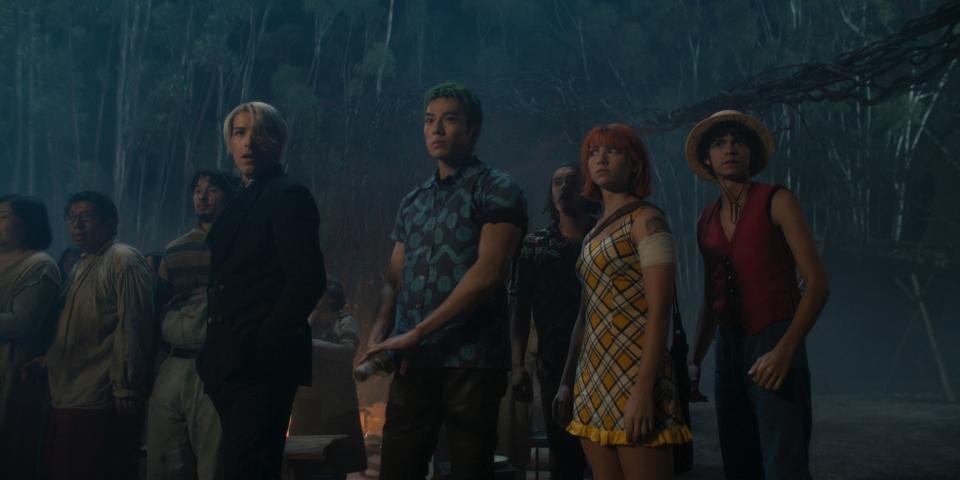
So I knew we had to nail it, and I knew that they would, but it was also coupled with the fact that Emily and I are friends. I’m sitting here as a friend, as a showrunner, watching her do this and keep going up to her and just check in and be like, Are you good? Do you want a break? And she was in it, she just wanted to keep going. We’d come out and put a jacket over her between takes because she didn’t want to get up, she didn’t want to leave the physicality of that moment. That was just so powerful to me, and I think it translated. I tear up every time I watch it.
DEADLINE: Were you surprised by the magnitude of the show’s success?
OWENS: To be completely honest with you, yes. And it’s not because I was not confident in the work that anyone on this show did. I am so proud to be a part of this production and to work with the people that I got to work with. I knew we were making a good show.
But there was a big hill for us to climb with how beloved One Piece is, with how much mistrust there is in anime adaptations. I didn’t sleep for two days before release because I didn’t not know what to expect with this labor of love that has been such a big part of my life. And also I’m a peasant so I was expecting the worst anyway.
I’m so grateful that people see what we’ve been trying to do, that they appreciate it. I love hearing people say, my mom’s not into anime but I got her to watch this and she loves the show. That’s the success. I’m over the moon at the numbers, the data, all of that stuff is great, especially because that’s what’s going to get us more seasons. But it’s people who see the love that went into it, and if people find the ability to share the story of One Piece with others, that to me is the success of this show.
Best of Deadline
SAG-AFTRA Interim Agreements: Full List Of Movies And TV Series
2023 Premiere Dates For New & Returning Series On Broadcast, Cable & Streaming
Sign up for Deadline's Newsletter. For the latest news, follow us on Facebook, Twitter, and Instagram.

 Yahoo News
Yahoo News 
